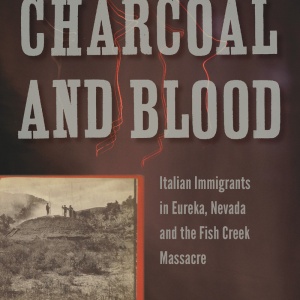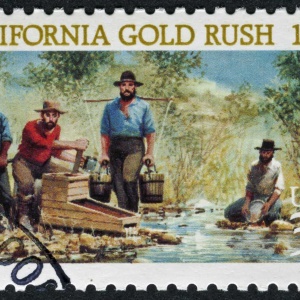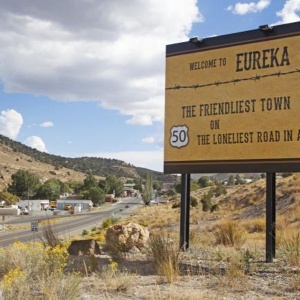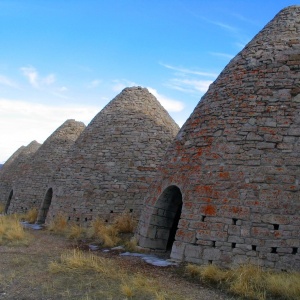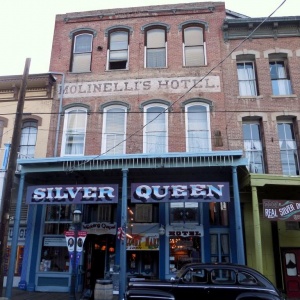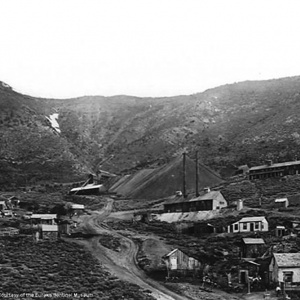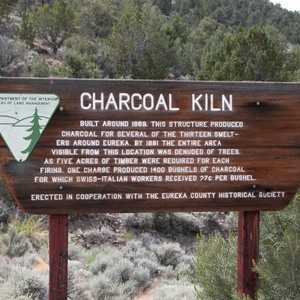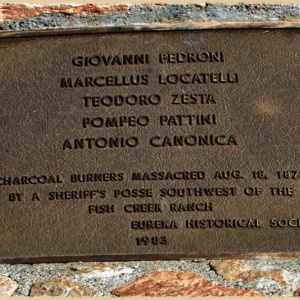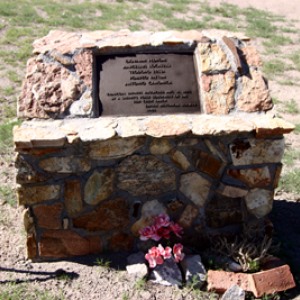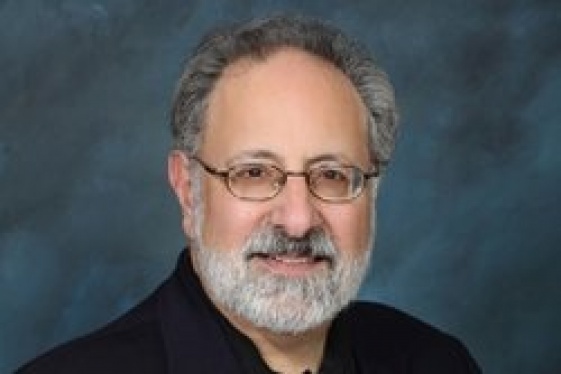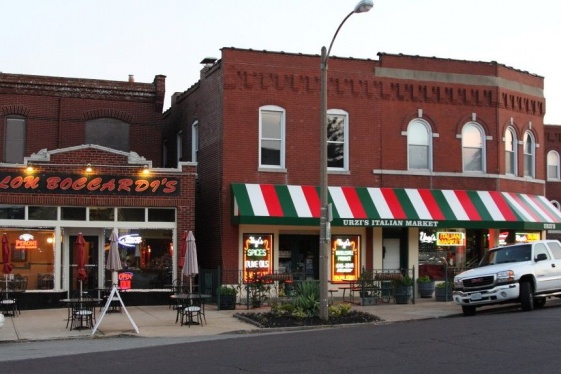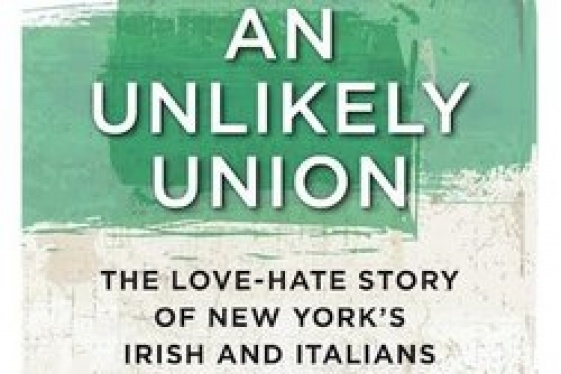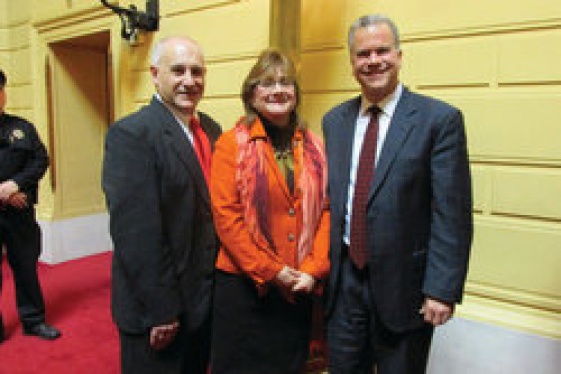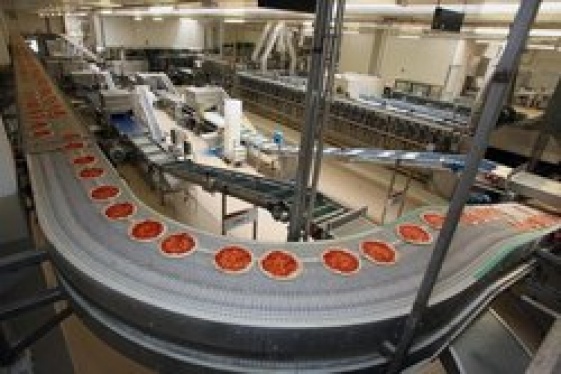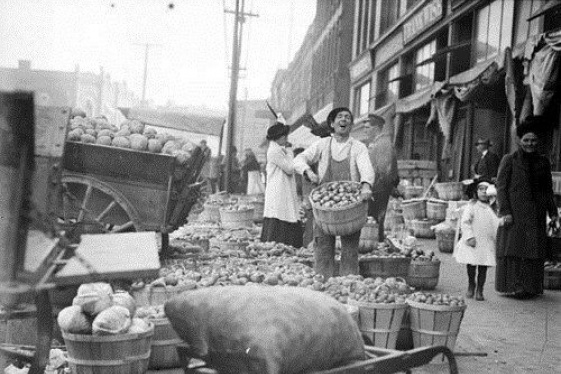
Silvio Manno (Author of the book "Charcoal and Blood: Italian Immigrants in Eureka, Nevada, and the Fish Creek Massacre")
Quando gli emigrati italiani in America si fecero guerra tra di loro: la storia del "Fish Creek massacre" in Nevada

The history of the Italian emigrants who left for America is often a history of difficulties, suffering and accidents. Often these accidents occurred in shameful and almost impossible work situations, which were the only ones left for the latest arrivals, the Italians willing to do anything to survive and allow their children to have a better education and a better life. Sometimes there were discriminatory prevarications.
Today we meet Silvo Manno, and we thank him for being here with us: he did research and wrote a book on what was called the "Charcoal and Blood: Italian Immigrants in Eureka, Nevada, and the Fish Creek Massacre", and happened in Nevada. The different thing from other tragic situations is that in this case the problems arose between two factions within the Italian community. It is important to understand what happened, to learn from their stories
Silvio, you are the author of the book “Charcoal and Blood: Italian Immigrants in Eureka, Nevada, and the Fish Creek Massacre”. How did you come up with the idea of this book?
In 1984 I enrolled at California State University of Fresno. As a university student I spent a great deal of time at the campus library. Given my passionate interest about immigration history, I was drawn to the Ethnic and Cultural Studies section of the library. There I chanced upon a book titled Restless Strangers: Nevada's Immigrants and Their Interpreters, authored by Wilbur S. Shepperson, history professor at the University of Reno, Nevada. Intrigued by the title, I scanned the book's index as I did habitually. To my amazement, I came across an entry that read: “Italian Wars.” As I probed deeper, I learned of the Fish Creek Massacre, a gruesome incident that occurred in the summer of 1879, outside Eureka, Nevada, following a confrontation between a heavily armed 9-man sheriff's posse and dozens of destitute Italian charcoal burners (carbonari). The showdown resulted in the death of five Italian immigrants, with several wounded and many arrested. Baffled by the historical silence that had concealed the tragedy for more than a century, silence already lamented by Professor Shepperson, who compared the massacre to “a Sacco and Vanzetti drama,” I vowed to shed light upon the heinous crime omitted from American history. That's when the sentiment for the book first arose. However, many years would pass before the idea would become reality.
We’d like to know more about the Italian emigration to Nevada. Where did those Italian immigrants come from, who were they and how did they get to Nevada?
They came almost exclusively from Italy's northern regions: Lombardy, Piedmont, and Liguria. The California gold rush of 1849 attracted hordes of immigrants from around the world, a sizable number of Italians was also drawn to the goldfields in search of fortune. But, rather than prospecting for the precious metal, most of them went into merchandising, catering to the needs of the “Forty-Niners.” Many of them became prosperous merchants and businessmen. By 1859 California's surface gold (placer) had been exhausted by legions of Argonauts and the lone prospector was replaced by industrial mining financed by wealthy investors.
That same year, another spectacular strike shook the mineral frontier, this time in the neighboring state of Nevada, where the world's richest silver deposit, the Comstock Lode, was unearthed. News of the discovery spread far and wide and throngs of fortune seekers rushed to the Silver State (Nevada). Having reaped much prosperity during the California gold rush by providing for the miners' necessities, several Italian merchants hurried to launch new business ventures on the Comstock. Dozens of boom-towns sprung up at lightening speed throughout the region. Preeminent among them rose Virginia City, center where the Italian presence was attested by the prestigious Molinelli’s Hotel, built in the 1870s. As the mineral wealth of the Comstock Lode dwindled, new strikes were avidly sought by both miners and investors. In the early 1870s, the small mining camp of Eureka, in southern Nevada, revealed the largest deposits of lead amalgamated with silver in the United States and perhaps in the world. While abundant, Eureka's ore turned out to be challenging and costly to smelt. The two minerals could be separated only at extremely high temperatures thus requiring vast quantities of charcoal to fuel the smelting ovens. In the early 1870s the charcoal trade was plied solely by the Chinese but as intolerance and persecution against them reached a feverish pitch the Asians were forced to yield the trade to the Italians.
The new arrivals hailed predominantly from Italy's alpine regions, with a lesser number originating from Switzerland's Italian speaking canton Ticino, where charcoal making was a century-old practice. Recruited by compatriots acting as middle men on behalf of American companies as well as Italian entrepreneurs (padroni) in search of cheap labor, prospective immigrants were frequently deceived by overly glowing accounts of easy riches to be found on Nevada's mining frontier. In reality, the desperate and poverty-stricken laborers bound for the American wilderness had unwittingly agreed to enter into a master-servant relationship. By signing the contract the Italian hirelings would incur heavy financial liabilities: repayment of the ocean crossing plus interest, payment for room and board provided by their new employers, wages paid to them in vouchers were only redeemable at the contractors' stores where tools and supplies were abysmally overpriced. Further, their inability to speak English coupled with their unfamiliarity with the dynamics of the American culture greatly hampered their personal autonomy. All these factors exacerbated their reliance upon their bosses (padroni) rendering them even more vulnerable to exploitation.
Although Eureka's Italians were an heterogeneous group of immigrants, they all shared a rural background and the range of occupations therein. Displaced by a backward semi-feudal agricultural system, political instability, increased taxation, and a series of crop failures caused by droughts and floods, a motley crew of desperate contadini heeded the promise of gainful employment on the mineral range of distant Nevada. While not all of them were expert charcoal makers, most became employed in the manufacture of such a valuable resource in the hills outside Eureka. The charcoal trade was a multifaceted industry and required a differentiated labor force that included: lumberjacks to cut timber, muleteers to transport the fallen timber, kiln or pit builders, timber packers. The kiln or pit controllers were the true charcoal makers, responsible for monitoring the varying temperatures inside the kiln or pit. Once the charcoal was produced it was bagged and loaded onto freight wagons and subsequently transported by the teamsters to the smelting furnaces in Eureka.
Obviously, not all charcoal makers were recruited by labor brokers on Italian soil. Some of them reached Nevada and the wilds of Eureka through the process known as “chain migration,” by which immigrants from a particular place follow others who have expatriated previously from the same location and have become established in the host community. Relying on such a support system, relatives, friends, or mere acquaintances (paesani) were enabled to emigrate with some assurance that a job would await them in the new land. Other Italians, already on American soil, reached Eureka after moving on from mining camps gone bust. Those who emigrated from Italy, after crossing the Atlantic, reached the Silver State by traveling across the American vastness aboard the transcontinental railroad. Completed in 1869, it joined the east of the United States on the Atlantic coast with the west to the Pacific coast. Another cluster of Italians trekked eastward to the Nevada frontier from California; among them there were some Forty-Niners who had raced to the Golden State following the discovery of gold. Although late nineteenth-century Nevada was a remote, industrial, and agricultural region large numbers of Italians settled in the Silver State, not just in Eureka, but in Reno, Virginia City, Ely, Paradise Valley, and Dayton as well.
We understand that life was not easy at all for the Italians in this area, right?
On the rugged frontier that engulfed Eureka, life was hard for all early settlers. But, by the mid-1870s of the XIX century, when the Italian population peaked, Eureka had grown into a prosperous mining center, affording its citizens comfortable living conditions. However, life for most Italian charcoal burners was extremely harsh; the very nature of their trade required them to live outdoors most of the year, in makeshift camps near the sources of timber, exposed to the elements of each changing season. Most lived in little burrows made of sticks and turf, unfit for human habitation. On those rare occasions, when the burners traveled to town for some well-deserved amusement, their leisure time was frequently spoiled by the townspeople's blatant hostility, often degenerating into brawls.
Not only did the burners contend with nature's rigors and with ethnic prejudice, they were also victims of an exploitative labor system perpetrated by the charcoal contractors, several of whom were Italian, by the teamsters who transported the charcoal, and by the smelters who processed the ores. Working in concert with one another these three entities conspired to exploit the burners. The contractors paid the burners starvation wages in the form of vouchers redeemable only at their supply stores; the teamsters weighted the charcoal at the smelting sites and did not disclose the contents of the receipts (weight and price) to the burners. The refusal by the smelters to deal directly with the charcoal producers at a lower cost convinced the burners that the whole trade was corrupt. Aiming at improving their deplorable working conditions and increasing their meager earnings, the burners formed the Charcoal Burners Protective Association (CBPA), hoping that by unionizing they would gain the necessary power to bargain with their antagonists.
One of the chapters of your book is called «The Charcoal Crisis». Is it true that at some point the tensions saw Italians on both sides, at war with each other?
Tensions within Eureka's Italian community surfaced as soon as the burners realized how exploitative their working conditions were. Most of their resentment was directed at their wealthy compatriots, the charcoal contractors who had engaged them back in Italy and now kept them in a state of servitude in collusion with other teamsters and smelters. The founding of the burners' union (CBPA) signaled the burners' determination to engage in political activity to improve their working conditions and it was viewed alarmingly by the burners' adversaries, several of them Italian.
Growing more daring each day, some of the more rebellious burners intensified their subversive raids particularly against those Italian charcoal ranchers, like Joseph Tognini, John Torre, and Peter Strozzi, who desisted from paying the higher price for charcoal demanded by the leadership of the CBPA. However, divisions within the recently established CBPA soon arose between the bolder burners who insisted on raising the charcoal price by any means, including violence, and those who refuted the any bellicose tactic and, although disheartened, were willing to resume charcoal production thus ending the stalemate.
Passions ran high among members of the two opposing factions, so much so that rows broke out in some of the local saloons, resulting in the death of a charcoal burner. After a month-long labor unrest and with no resolution in sight, local authorities and leaders of the business community, including two prominent Italians, Joseph Tognini and John Vanina, appealed to Nevada Governor Kinkead to mobilize the state militia and settle the charcoal crisis once and for all. The intra-etnic conflict that plagued Eureka's Italian community represents a historical instance of a clash between class and ethnicity. Ultimately, the economic interests of Eureka's Italian dominant class prevailed over ethnic bonds of solidarity with their impoverished compatriots.
Please tell us something about the event that was called “Fish Creek Massacre”
One of the largest and most turbulent charcoal camps of Eureka County was Fish Creek, thirty-miles from the town of Eureka. Although the state militia had been placed on alert, ready to intervene if the crisis deteriorated further, the local sheriff, the foremost lawman in Eureka, mortified by his repeated failures to subdue the riotous burners, attempted to redeem his tarnished reputation by making one last and desperate attempt to restore public order. On August 18, 1879, Sheriff Matthew Kyle dispatched an eight-men posse led by Deputy Sheriff J. B. Simpson to Fish Creek to serve arrest warrants of questionable legal validity. Sheriff Kyle's hoped that by arresting the ring leaders that had fomented the revolt their followers would capitulate. Deputy Simpson and his posse reached Fish Creek at dusk and were confronted by dozens of bellicose burners. Though greatly outnumbered and intimidated by the angry multitude, Deputy Simpson and his lawmen proceeded to serve the expedient warrants thus provoking the wrath of the defiant burners.
After an exchange of harsh words and threats on both sides, pandemonium erupted. Eyewitness accounts of the massacre at Fish Creek were contradictory. Posse members claimed the firing of a shot by one of the leaders of the burners ignited the shooting. Burners stated that the posse opened fire without provocation. Five burners died, six, at least, were wounded, and fourteen were arrested. Only one member of the posse was slightly injured. Close examination of the bodies of the slain burners revealed conspicuous traces of gunpowder in the chests of the victims, confirming that the burners had been shot at close range. Wielding the most lethal weaponry available at the time, the posse discharged its arms with remarkable accuracy as demonstrated by the mortal wounds sustained by the victims, all of whom were shot in the chest near the heart. The proximity and the precision of the shots fired by the posse led to the indisputable conclusion that the Fish Creek massacre was deliberately orchestrated and executed in cold blood by Eureka's law enforcers to protect the financial interests of Eureka's multi-ethnic business class.
A few months ago, the mayor of New Orleans officially apologized on behalf of her city for the 11 Italians killed in the shameful lynching happened in 1891. Is it something that has happened, or you think will ever happen, even for the Italians victims of the “Fish Creek Massacre”?
It would be extremely unlikely that an apology would ever be issued by Eureka's mayor, or by any other public officials, for the victims of the Fish Creek massacre. Having remained buried for more than 130 years there is hardly any public awareness about the tragedy, even among historians of the American West knowledge of the massacre is almost nonexistent. Although Nevada historian Shepperson compared the Fish Creek carnage to a Sacco and Vanzetti drama, and despite the considerable press coverage that followed the shooting, the remoteness of the crime scene and the lack of direct channels of communication caused public interest to be short-lived.
Unaware of the crucial details that led to the massacre, the incident was hastily dismissed by most as a mere case of foreign union rioters disturbing the social order by interfering with the lofty precepts of American capitalism. Further, the intra-ethnic nature of the conflict that led to the Fish Creek massacre, stands in sharp contrast with the 1891 New Orleans' lynching of the 11 Sicilian immigrants. In New Orleans a despised group of foreigners were scapegoated by American nativists intent on confounding the circumstances surrounding the murder of New Orleans Police Chief Hennessy. At Eureka, prominent Italian businessmen conspired with their American cohorts in the oppression of the charcoal burners and actively instigated the persecution of their compatriots, whose blood was ultimately and unjustly shed at Fish Creek.
You may be interested
-
'Phantom Limb': A Conversation With Dennis...
Dennis Palumbo is a thriller writer and psychotherapist in private practice. He's the auth...
-
“The Hill” St. Louis’ Little Italy
When the fire hydrants begin to look like Italian flags with green, red and white stripes,...
-
An Unlikely Union: The love-hate story of Ne...
Award-winning author and Brooklynite Paul Moses is back with a historic yet dazzling sto...
-
Former Montclair resident turns recipes into...
Former Montclair resident Linda Carman watched her father's dream roll off the presses thi...
-
Il Console Generale Usa: su turismo e seta s...
In mattinata ha incontrato il sindaco di Como, Mario Lucini, assieme all'assessore Gisella...
-
Polisena delivers address as state lawmakers...
"Italian-Americans came to our country, and state, poor and proud," Johnston Mayor Joseph...
-
Small and Medium Enterprises as the Italian...
by Claudia Astarita A recent study on 120 artisan SMEs of excellence – conducted...
-
The “Little Italies” of Michigan
In doing reseach for this post, I was sure that Italian immigrants found their way to Detr...





